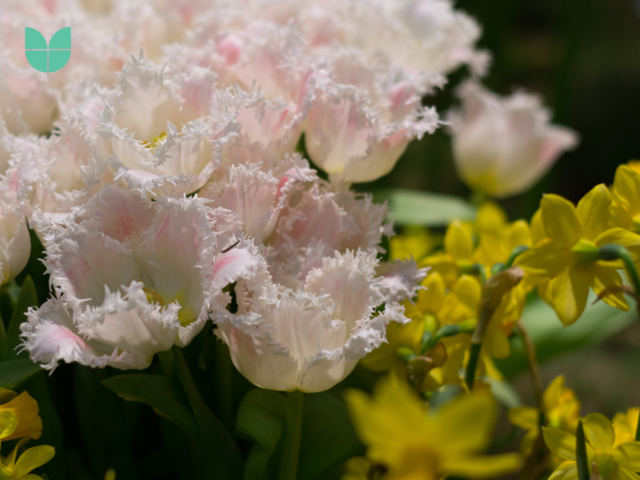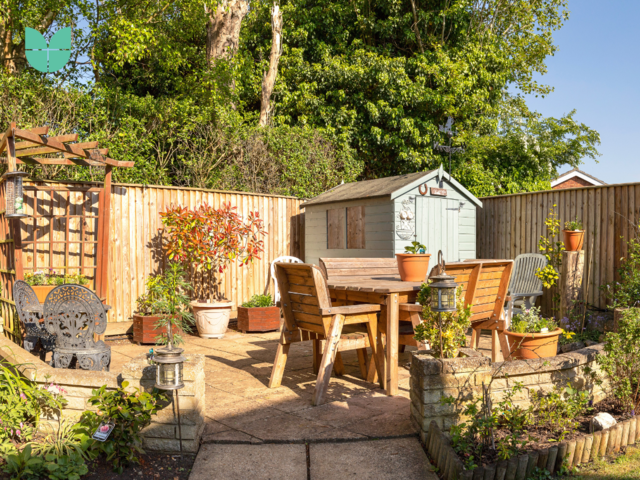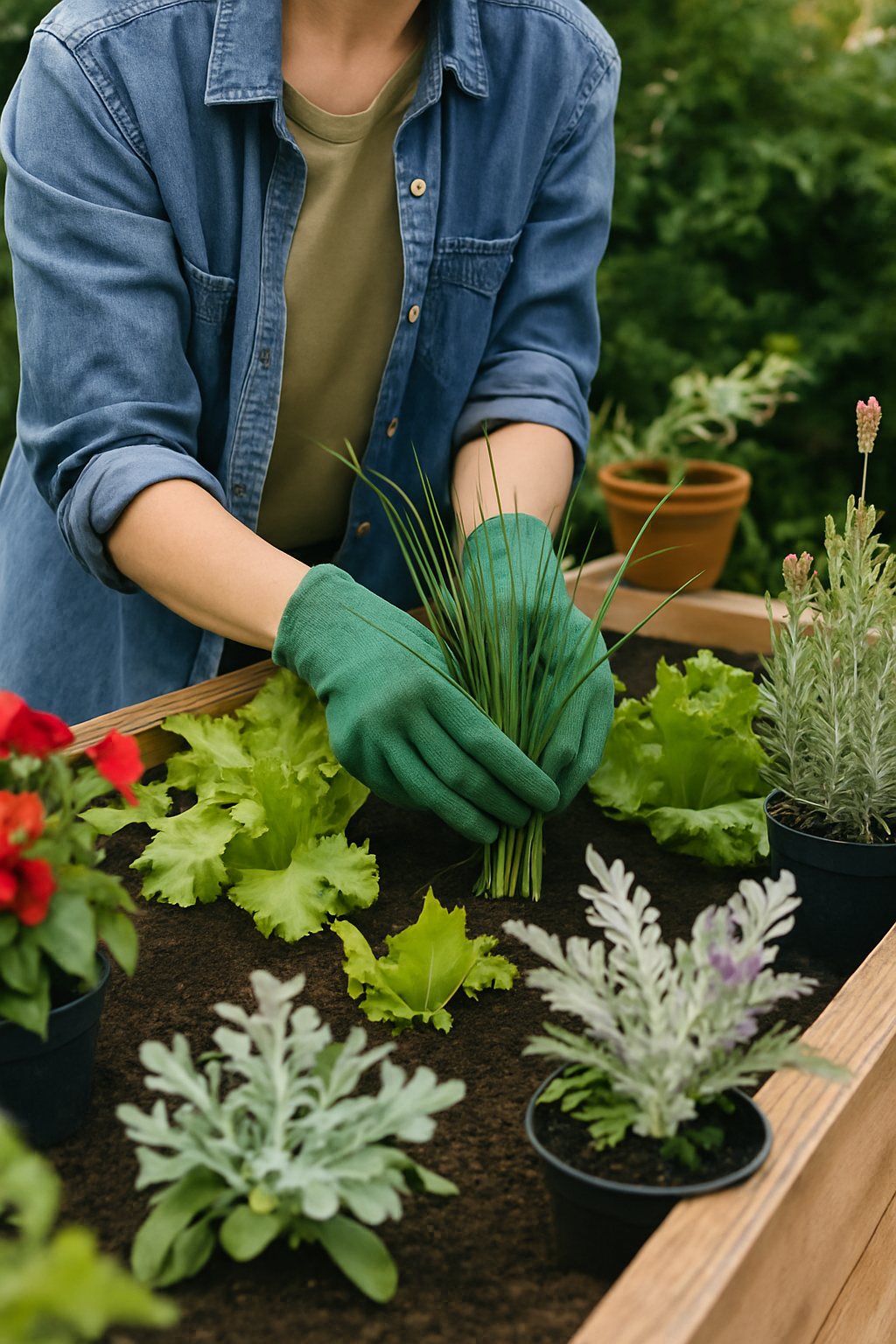Late winter and early spring may not be the first seasons that come to mind when you think about gardening, but these cooler months can actually be the perfect time to start planning and preparing for the growing season ahead. They not only provide the opportunity to get a head start on your gardening chores, but they also offer the chance to enjoy a burst of colour and life in an otherwise potentially dormant garden.

There are several reasons why late winter and early spring can be the perfect time for gardening
- Milder temperatures: One of the benefits of gardening during late winter and early spring is the milder temperatures that are typically present during this time of the year. The milder temperatures make gardening a much more calming experience and can allow for longer periods of time spent outside tending to your garden and enjoying the outdoors. Whether you're planting seeds, starting seedlings, or simply tending to your existing plants, the entire process is more comfortable without extreme heat or cold to contend with.
- Longer days: As the days become longer, there is more daylight for you to enjoy as you tend to your garden.
- Early planning: Late winter and early spring provide the opportunity to start planning and preparing for the growing season ahead. You can assess your garden, make any necessary repairs, and start thinking about what you want to plant.
- Get a head start: By starting your gardening chores in late winter or early spring, you can get a head start on the growing season. Before the weather really warms up, planting seeds or starting seedlings indoors can be especially beneficial.
- Brighten up the garden: Late winter and early spring can be a time when the garden may otherwise be dormant, so adding plants that bloom during this time will bring life and colour to your garden.
There are many types of plants that bloom in late winter or early spring. They can add colour to the garden and make it more attractive during a time when it may be otherwise dormant. Some examples of these plants include:
- Bulbs: Bulbs are a great choice for late winter and early spring as they can be planted in the fall and will emerge from the ground as the weather warms up. Some bulbs that are known for their late winter and early spring blooms include daffodils, tulips, crocuses, and hyacinths.
- Perennials: Perennials are plants that come back year after year and many of them have the added bonus of blooming in late winter or early spring. Some perennials to consider for your garden include hellebores, winter irises, snowdrops, and primroses.
- Annuals: Annuals are plants that only last for one growing season but they can provide a quick burst of colour to your garden. Some annuals that are known for their late winter and early spring blooms include pansies, violas, calendulas, and snapdragons.
By incorporating a mix of bulbs, perennials, and annuals into your garden, you can enjoy a variety of blooms that add some life and colour to your outdoor spaces.

How to care for late winter/early spring blooming plants
Proper care and maintenance are key to ensuring their health and longevity. Here are a few tips for caring for these plants:
- Planting and spacing: When planting bulbs and perennials, it's important to follow the recommended guidelines for depth and spacing. Bulbs should be planted at a depth that is three times their height, and perennials should be spaced according to the size they will reach at maturity. By following these guidelines, you can help ensure that your plants have the space they need to grow and thrive.
- Watering and fertilising: Water is essential for the health of all plants, and late winter and early spring blooming plants are no exception. Water plants regularly, but be careful not to overwater as this can lead to root rot. Fertilise as needed, but be mindful of the type and amount of fertiliser you use. Too much can be harmful to your plants.
- Protecting from frost and cold temperatures: To protect your plants from frost and cold temperatures, consider using mulch or blankets to insulate the soil and cover tender plants. You can also bring potted plants indoors or move them to a sheltered area if necessary.

Tips to brighten up your garden with these late winter/early spring flowering plants
There are many ways to incorporate late winter and early spring blooming plants into your garden thus adding a burst of colour and life to your outdoor spaces. Here are a few ideas to get you started:
- Mix and match: One of the fun things about gardening is the opportunity to mix and match different types of plants to create a colourful and varied display. Consider combining bulbs, perennials, and annuals in different combinations to create a more interesting and lively garden.
- Use containers and pots: If you don't have much space in your garden, or if you want to bring plants closer to your home, consider using containers and pots. These can be a great way to add some life and colour to your outdoor spaces without taking up too much room.
- Create a cutting garden: If you love fresh flowers indoors, consider creating a cutting garden specifically for this purpose. This can be a fun and rewarding project, and it's also a great way to bring a little bit of the outdoors inside.
- Incorporate plants into landscaping: Late winter and early spring blooming plants can also be incorporated into your overall landscaping design. Consider adding them along walkways, borders, or in areas where they can be enjoyed up close.
By following these tips, you can help ensure that your late winter and early spring blooming plants stay healthy and vibrant throughout the season. With a little care and attention, these plants can eliminate the dull winter feeling from your garden by introducing a burst of life and colour.
Garden design can be rewarding and fulfilling, but it can also be a little complex for those who are new to it. That's where our garden design courses come in.
Enrol in one of our courses today and take the first step towards creating the garden of your dreams!

